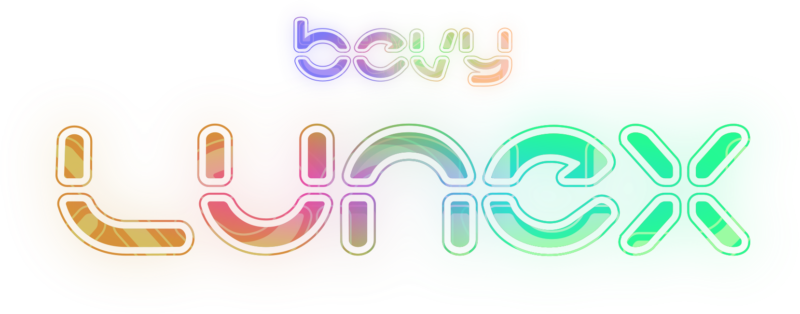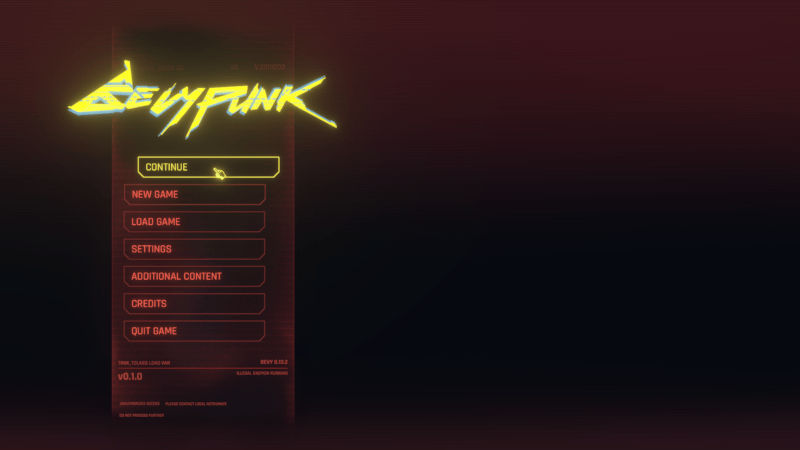24 releases
Uses new Rust 2024
| 0.4.1 | Apr 25, 2025 |
|---|---|
| 0.3.2 | Mar 10, 2025 |
| 0.2.4 | Sep 21, 2024 |
| 0.2.3 | Jul 22, 2024 |
| 0.0.9 | Nov 20, 2023 |
#36 in Game dev
595 downloads per month
Used in 3 crates
165KB
3K
SLoC

Blazingly fast retained layout engine for Bevy entities, built around vanilla Bevy ECS. It gives you the ability to make your own custom UI using regular ECS like every other part of your app.
-
Any aspect ratio: Lunex is designed to support ALL window sizes out of the box without deforming. The built in layout types react nicely and intuitively to aspect ratio changes.
-
Optimized: Unlike immediate mode GUI systems, Bevy_Lunex is a retained layout engine. This means the layout is calculated and stored, reducing the need for constant recalculations and offering potential performance benefits, especially for static or infrequently updated UIs.
-
ECS focused: Since it's built with ECS, you can extend or customize the behavior of your UI by simply adding or modifying components. The interactivity is done by regular systems and events.
-
Worldspace UI: One of the features of Bevy_Lunex is its support for both 2D and 3D UI elements, leveraging Bevy's
Transformcomponent. This opens up a wide range of possibilities for developers looking to integrate UI elements seamlessly into both flat and spatial environments. Diegetic UI is no problem.

Try out the live WASM demo on
Itch.io(Limited performance & stutter due to running on a single thread). For best experience compile the project natively.
Syntax Example
This is an example of a clickable Button created from scratch using provided components. Thanks to ECS, the syntax is highly modular with strong emphasis on components-per-functionality. As you can see, it is no different from vanilla Bevy ECS.
// Create UI
commands.spawn((
// Initialize the UI root for 2D
UiLayoutRoot::new_2d(),
// Make the UI synchronized with camera viewport size
UiFetchFromCamera::<0>,
)).with_children(|ui| {
// Spawn a button in the middle of the screen
ui.spawn((
Name::new("My Button"),
// Specify the position and size of the button
UiLayout::window().pos(Rl((50.0, 50.0))).size((200.0, 50.0)).pack(),
// When hovered, it will request the cursor icon to be changed
OnHoverSetCursor::new(SystemCursorIcon::Pointer),
)).with_children(|ui| {
// Spawn a child node but with a background
ui.spawn((
// You can define layouts for multiple states
UiLayout::new(vec![
// The default state, just fill the parent
(UiBase::id(), UiLayout::window().full()),
// The hover state, grow to 105% of the parent from center
(UiHover::id(), UiLayout::window().anchor(Anchor::Center).size(Rl(105.0)))
]),
// Enable the hover state and give it some properties
UiHover::new().forward_speed(20.0).backward_speed(4.0),
// You can specify colors for multiple states
UiColor::new(vec![
(UiBase::id(), Color::BEVYPUNK_RED.with_alpha(0.15)),
(UiHover::id(), Color::BEVYPUNK_YELLOW.with_alpha(1.2))
]),
// You can attach any form of rendering to the node, be it sprite, mesh or something custom
Sprite {
image: asset_server.load("images/button.png"),
// Here we enable sprite slicing
image_mode: SpriteImageMode::Sliced(TextureSlicer { border: BorderRect::all(32.0), ..default() }),
..default()
},
// Make sure it does not cover the bounding zone of parent
Pickable::IGNORE,
)).with_children(|ui| {
// Spawn a text child node
ui.spawn((
// For text we always use window layout to position it. The size is computed at runtime from text bounds
UiLayout::window().pos((Rh(40.0), Rl(50.0))).anchor(Anchor::CenterLeft).pack(),
UiColor::new(vec![
(UiBase::id(), Color::BEVYPUNK_RED),
(UiHover::id(), Color::BEVYPUNK_YELLOW.with_alpha(1.2))
]),
UiHover::new().forward_speed(20.0).backward_speed(4.0),
// Here we specify the text height proportional to the parent node
UiTextSize::from(Rh(60.0)),
// You can attach text like this
Text2d::new("Click me!"),
TextFont {
font: asset_server.load("fonts/semibold.ttf"),
font_size: 64.0,
..default()
},
// Make sure it does not cover the bounding zone of parent
Pickable::IGNORE,
));
});
})
// Utility observers that enable the hover state on trigger
.observe(hover_set::<Pointer<Over>, true>)
.observe(hover_set::<Pointer<Out>, false>)
// Interactivity is done through observers, you can query anything here
.observe(|_: Trigger<Pointer<Click>>| {
println!("I was clicked!");
});
});
Documentation
-
The Lunex Book:
Bevy Lunex book. -
Highly documented source code on Docs.rs:
Docs.rs. -
Highly documented production-ready example:
Bevypunk example.
Contributing
Any contribution submitted by you will be dual licensed as mentioned below, without any additional terms or conditions. If you have the need to discuss this, please contact me.
Licensing
Released under both APACHE and MIT licenses. Pick one that suits you the most!
Dependencies
~61–100MB
~2M SLoC